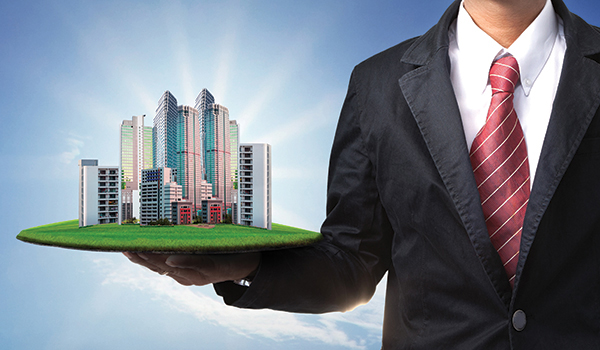Congratulations! You’ve taken the plunge into multi-unit investment, a powerful strategy for building wealth and generating consistent income. However, with increased units comes increased responsibility. Neglecting the upkeep of your property can lead to costly repairs, tenant dissatisfaction, and ultimately, a dent in your bottom line.
This comprehensive guide will equip you with the knowledge and practical tips to effectively maintain your multi-unit investment property, ensuring its long-term value and profitability. Let’s dive in!
Contents
Why Proactive Upkeep is Non-Negotiable
Before we delve into the specifics, let’s underscore why consistent upkeep isn’t just a good idea – it’s a necessity:
- Tenant Retention: Well-maintained properties attract and retain quality tenants. Prompt responses to maintenance requests and a clean, functional living environment foster positive landlord-tenant relationships and reduce costly turnover.
- Property Value Preservation: Regular maintenance prevents minor issues from escalating into major, expensive repairs. This proactive approach safeguards your investment and ensures its appreciation over time.
- Legal Compliance: Landlord-tenant laws often mandate specific maintenance standards to ensure the safety and habitability of the property. Neglecting these can lead to legal issues and financial penalties.
- Cost Efficiency: Addressing small problems early is significantly cheaper than dealing with major failures. A leaky faucet fixed promptly prevents water damage and a hefty water bill.
- Enhanced Curb Appeal: A well-maintained exterior attracts prospective tenants and contributes to a positive perception of your property within the community.
Establishing a Robust Maintenance System
A haphazard approach to maintenance is a recipe for disaster. Implementing a structured system is crucial for efficiency and effectiveness. Here’s how to build one:
- Regular Inspections: Schedule routine inspections of both individual units (with proper notice) and common areas. Quarterly or semi-annual inspections can help identify potential issues before they become critical. Create a detailed checklist to ensure consistency.
- Tenant Communication Channels: Establish clear and efficient ways for tenants to report maintenance issues. This could include an online portal, a dedicated email address, or a phone line. Emphasize the importance of timely reporting.
- Prioritization Protocol: Develop a system for prioritizing maintenance requests based on urgency (e.g., safety hazards, essential services, cosmetic issues). This ensures that critical problems are addressed promptly.
- Document Everything: Maintain detailed records of all maintenance requests, repairs, and inspections. This documentation is invaluable for tracking trends, budgeting, and potential legal situations. Include dates, descriptions of the issue, actions taken, and costs.
- Vendor Relationships: Cultivate relationships with reliable and trustworthy contractors (plumbers, electricians, HVAC technicians, landscapers, etc.). Having a network of professionals ensures timely and quality service. Negotiate favorable rates and establish clear communication protocols.
- Budgeting for Maintenance: Allocate a specific portion of your rental income for maintenance expenses. A common rule of thumb is the “1% rule,” where you budget 1% of the property’s value annually for maintenance. However, this can vary based on the age and condition of your property. Regularly review and adjust your maintenance budget.
Essential Maintenance Areas: A Room-by-Room and System-by-System Breakdown
Let’s break down the key areas requiring regular attention:
Individual Units
- Plumbing:
- Regular Checks: Inspect faucets, toilets, and showers for leaks. Check water pressure and drainage.
- Preventative Measures: Educate tenants on proper usage to avoid clogged drains. Schedule regular drain cleaning, especially in older buildings.
- Troubleshooting: Address leaks promptly to prevent water damage and mold growth. Repair or replace faulty fixtures.
- Electrical:
- Regular Checks: Test smoke detectors and carbon monoxide detectors regularly (and replace batteries as needed). Inspect outlets and light switches for damage or loose connections.
- Preventative Measures: Avoid overloading circuits. Ensure proper grounding.
- Troubleshooting: Address flickering lights, sparking outlets, or tripped breakers immediately. Hire a qualified electrician for any complex electrical work.
- HVAC (Heating, Ventilation, and Air Conditioning):
- Regular Checks: Schedule annual professional servicing of HVAC systems, including filter changes, cleaning, and performance checks.
- Preventative Measures: Encourage tenants to change air filters regularly (if their lease stipulates). Ensure proper ventilation to prevent moisture buildup.
- Troubleshooting: Address unusual noises, inconsistent temperatures, or lack of airflow promptly.
- Appliances:
- Regular Checks: Inspect appliances (refrigerators, ovens, dishwashers, washing machines, dryers) for proper functioning. Clean coils and vents as needed.
- Preventative Measures: Provide tenants with operating manuals and guidelines for proper use.
- Troubleshooting: Address malfunctions promptly to minimize inconvenience for tenants. Consider offering appliance warranties.
- Interior:
- Regular Checks: Inspect walls, ceilings, and floors for cracks, water damage, or wear and tear. Check doors and windows for proper operation and secure locks.
- Preventative Measures: Touch up paint as needed. Address minor repairs promptly to prevent them from worsening.
- Troubleshooting: Repair damaged drywall, fix sticking doors or windows, and replace worn flooring.
- Safety Features:
- Regular Checks: Ensure fire extinguishers are present, charged, and easily accessible. Verify that smoke detectors and carbon monoxide detectors are functioning correctly. Check the condition of emergency exits and ensure they are clearly marked and unobstructed.
- Preventative Measures: Conduct regular safety inspections. Provide tenants with information on fire safety and emergency procedures.
Common Areas
- Exterior:
- Regular Checks: Inspect the roof, gutters, siding, foundation, walkways, parking areas, and landscaping. Look for signs of damage, wear and tear, or safety hazards.
- Preventative Measures: Schedule regular gutter cleaning, landscaping maintenance (mowing, trimming, snow removal), and minor repairs to prevent larger issues. Ensure proper drainage to avoid water damage to the foundation.
- Troubleshooting: Address roof leaks, cracked sidewalks, or damaged siding promptly. Maintain adequate lighting in common areas for safety.
- Shared Amenities:
- Regular Checks: If your property includes shared amenities like laundry rooms, gyms, or community rooms, establish a cleaning and maintenance schedule for these areas. Inspect equipment for proper functioning and safety.
- Preventative Measures: Post clear rules and guidelines for the use of shared amenities. Schedule regular professional cleaning.
- Troubleshooting: Address equipment malfunctions or damage promptly. Ensure adequate supplies are available (e.g., soap in laundry rooms).
- Landscaping:
- Regular Checks: Monitor the health of trees, shrubs, and lawns. Ensure proper irrigation and drainage.
- Preventative Measures: Implement a regular landscaping maintenance schedule. Address pest problems promptly.
- Troubleshooting: Remove dead or hazardous trees or branches. Repair irrigation systems.
Tips and Tricks for Efficient Upkeep
- Tenant Involvement: Encourage tenants to report maintenance issues promptly. Provide them with clear instructions on how to do so. Consider offering small incentives for timely reporting that prevents larger problems.
- Seasonal Maintenance: Implement seasonal maintenance checklists (e.g., preparing for winter by inspecting heating systems and preventing frozen pipes; preparing for summer by checking air conditioning and landscaping).
- Preventative Maintenance Schedule: Create a proactive maintenance schedule that goes beyond responding to tenant requests. This includes regular inspections and servicing of key systems.
- Consider Professional Management: If the demands of property upkeep become overwhelming, explore hiring a reputable property management company. They can handle tenant communication, maintenance requests, vendor coordination, and routine inspections, freeing up your time and ensuring professional management of your property’s physical condition.
- DIY vs. Professional: Know your limitations. While some minor repairs can be handled yourself, always hire qualified professionals for electrical, plumbing, HVAC, and structural issues.
- Bulk Purchasing: For frequently used maintenance supplies (light bulbs, cleaning products, etc.), consider purchasing in bulk to save money.
- Technology Adoption: Explore property management software that can help you track maintenance requests, schedule repairs, and communicate with tenants and vendors.
- Emergency Preparedness: Have a plan in place for handling emergencies (e.g., water leaks, power outages, severe weather). Provide tenants with emergency contact information.
- Invest in Energy Efficiency: Explore energy-saving renovations and upgrades, such as installing energy-efficient windows, insulation, smart thermostats, and energy-star rated appliances. These improvements can lower utility costs for both you and your tenants, increasing the attractiveness and long-term value of your property while contributing to sustainability.
- Exit Inspections: Conduct thorough move-out inspections using a detailed checklist to identify any damages beyond normal wear and tear. This helps in fairly assessing security deposit deductions.
- Continuous Improvement: Regularly review your maintenance processes and identify areas for improvement. Seek feedback from tenants and vendors.
The Long-Term Rewards of Diligent Upkeep
While the consistent effort required for multi-unit property upkeep might seem demanding, the long-term rewards are significant. By prioritizing proactive maintenance, you’ll:
- Maximize your rental income through higher occupancy rates and reduced turnover.
- Protect and enhance the value of your investment.
- Minimize unexpected and costly repairs.
- Foster positive relationships with your tenants.
- Ensure legal compliance and avoid potential liabilities.
Mastering the upkeep of your multi-unit investment property is an ongoing process of learning, adapting, and implementing efficient systems. By following the guidelines and tips outlined in this comprehensive guide, you’ll be well-equipped to navigate the challenges and reap the substantial benefits of your investment for years to come. Remember, a well-maintained property is a profitable property.




